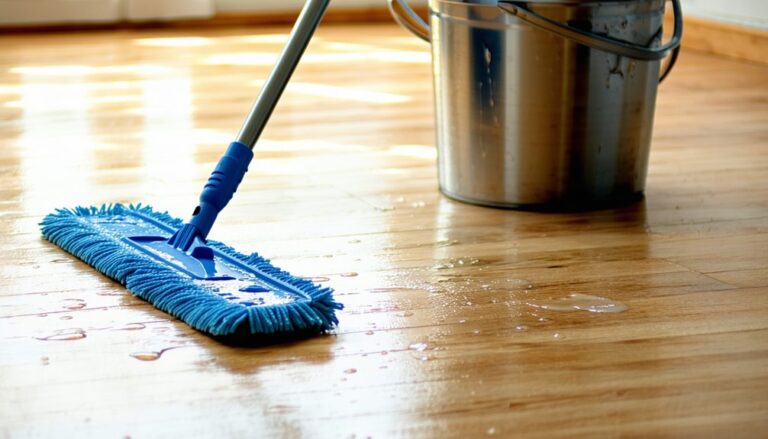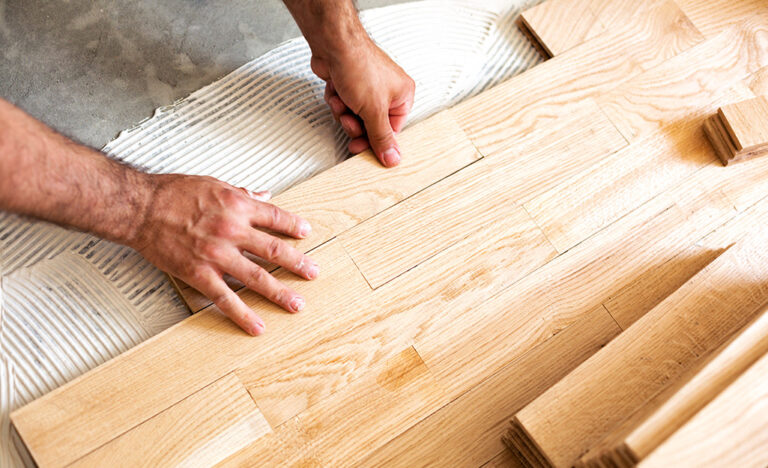Yes, hand scraped wood floors can be refinished, but it's not without challenges. Their unique textures may hinder even sanding, making it difficult to achieve a smooth surface. There's also a limited thickness to take into account, affecting how many times you can refinish them. Additionally, deep scratches may not be fully removed. With proper maintenance, you can prolong their lifespan with effective strategies. To better understand the refinishing process and maintenance techniques, keep exploring the topic.
Understanding Hand Scraped Wood Floors
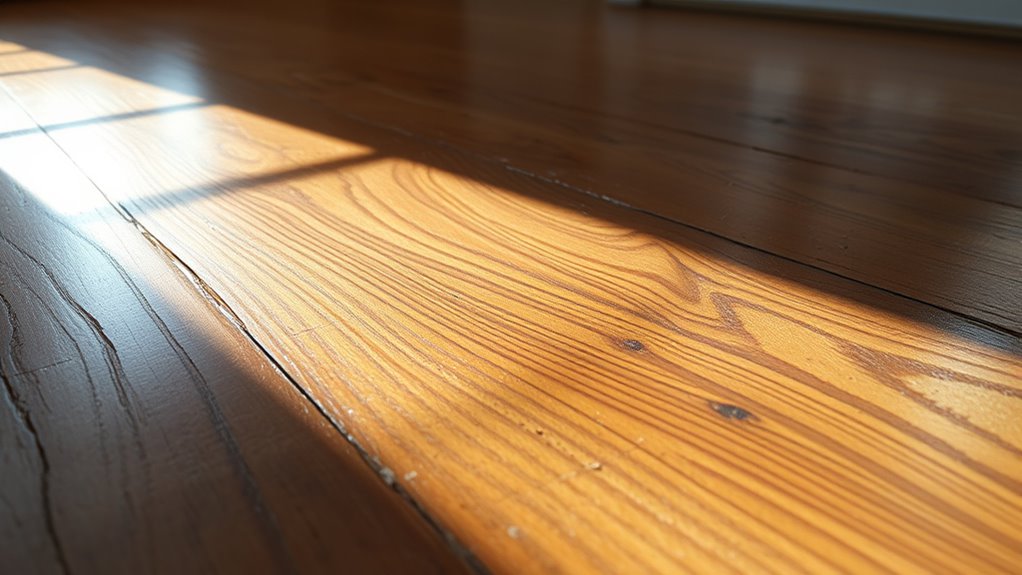
Hand scraped wood floors offer a unique aesthetic that appeals to many homeowners seeking character and warmth in their spaces. These floors are crafted by hand, resulting in a textured surface that showcases the natural wood characteristics, such as knots and grain variations. This artisanal approach not only enhances the beauty of the wood but also provides a rustic charm that can't be replicated by machine finishes. The deliberate imperfections add depth and personality, making each board distinct. Additionally, hand scraped finishes can improve traction, reducing the risk of slips. If you're looking for flooring that combines elegance with a touch of individuality, hand scraped wood floors deliver a sophisticated yet inviting atmosphere to any room in your home.
Signs That Your Floors Need Refinishing
While it might be easy to overlook the condition of your floors, several signs indicate that refinishing is necessary to restore their beauty and functionality. First, if you notice significant floor wear, such as scratches, dents, or fading, it's a clear signal that your floors need attention. Surface damage, like water stains or discoloration, can also detract from the overall appeal of your space. Additionally, if you're finding it increasingly challenging to clean or maintain your floors, that's another indicator of deterioration. Cracks and splinters can worsen over time, leading to potential safety hazards. Regularly evaluating these signs can help you decide when it's time to refinish your hand scraped wood floors, ensuring they remain stunning and functional.
The Refinishing Process for Hand Scraped Floors
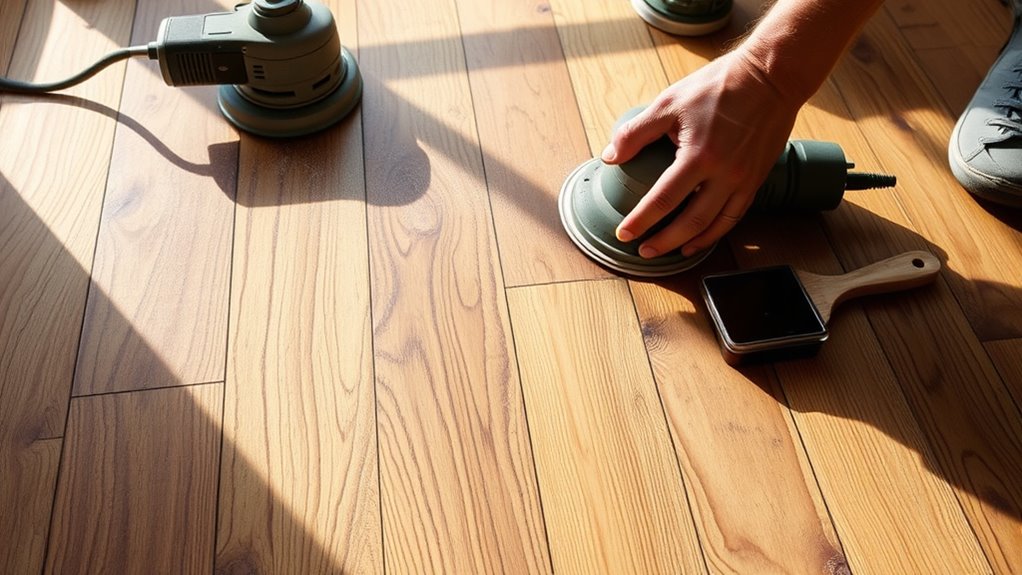
Refinishing hand scraped wood floors typically involves several key steps to restore their natural beauty and durability. To achieve ideal results, follow these refinishing techniques:
- Preparation: Clear the area and inspect for damage. Clean the floors thoroughly to remove dust and debris.
- Sanding: Use a drum sander with appropriate grit to carefully sand the surface, respecting the unique texture of hand scraped floors.
- Staining: Apply your chosen stain evenly, ensuring it penetrates the wood for a rich finish.
- Sealing: Finish with a protective sealant to enhance durability and ease wood floor maintenance.
Limitations of Refinishing Hand Scraped Wood Floors
Although refinishing can breathe new life into your hand scraped wood floors, there are several limitations to take into account. One primary challenge revolves around the texture; the unique grooves and ridges can impede even sanding, making it difficult to achieve a uniformly smooth surface. Additionally, the thickness of the wood can restrict the number of times you can refinish, impacting long-term wood floor durability. You may also encounter issues with the finish adhering properly to the uneven surfaces, which can lead to inconsistencies and premature wear. Finally, refinishing may not eliminate deep scratches or dents, further complicating the restoration process. Understanding these refinishing challenges is vital before starting on revitalizing your hand scraped wood floors.
Alternative Solutions for Maintaining Your Floors
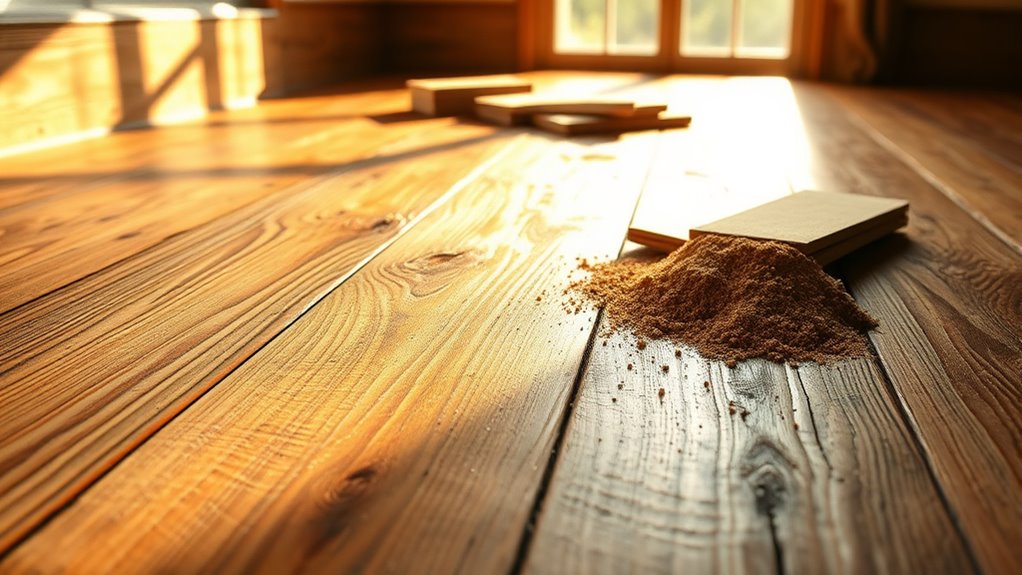
Given the challenges associated with refinishing hand scraped wood floors, exploring alternative solutions for maintenance becomes increasingly important. You can keep your floors looking great and extend their lifespan by implementing effective floor maintenance strategies. Here are some cleaning techniques to take into account:
- Regular Sweeping: Remove dust and debris daily to prevent scratches.
- Damp Mopping: Use a microfiber mop with a mild cleaner to avoid water damage.
- Spot Cleaning: Quickly address spills with a soft cloth to prevent stains.
- Periodic Conditioning: Apply a wood conditioner every few months to maintain luster.
Frequently Asked Questions
Can I Use a Regular Floor Sander on Hand Scraped Wood Floors?
When it comes to sanding techniques, you might think a regular floor sander's just fine for hand scraped wood floors. However, you'd be mistaken. Regular sanders can damage the unique texture and character of your flooring. Instead, consider using specialized equipment designed for this type of floor maintenance. By doing so, you'll preserve the beauty and integrity of your hand scraped wood, ensuring it lasts for years while maintaining its distinctive appearance.
How Often Should Hand Scraped Wood Floors Be Refinished?
You should consider refinishing your hand scraped wood floors every 5 to 7 years, depending on their wear and tear. Regular maintenance, like cleaning and applying a protective finish, can extend this timeframe. When evaluating refinishing frequency, look for signs of damage or fading. To keep your floors looking their best, follow these maintenance tips: avoid harsh cleaners, use area rugs in high-traffic zones, and control humidity levels in your home.
Do Hand Scraped Wood Floors Require Special Cleaning Products?
Hand scraped wood floors don't necessarily require special cleaning products, but you should use gentle, pH-balanced cleaners to maintain their unique texture. Regular cleaning techniques like sweeping and vacuuming help prevent dirt buildup. For deeper cleaning, consider a damp mop with a suitable hardwood cleaner. Following these maintenance tips guarantees your floors stay beautiful and last longer, allowing you the freedom to enjoy your space without worrying about damaging your investment.
Are Hand Scraped Wood Floors More Expensive to Refinish?
Refinishing hand scraped wood floors often comes with a higher price tag—typically 20-30% more than standard wood floors. This cost comparison arises from the specialized refinishing techniques required to preserve their unique texture. You'll need skilled professionals who understand the intricacies of hand scraped surfaces, ensuring that the floor's character isn't lost. While it may be more expensive, the aesthetic and value it adds to your home can be worth the investment.
Can I Change the Finish Color During Refinishing?
Yes, you can change the finish color during refinishing. There are various color change options available, allowing you to achieve your desired look. When using refinishing techniques, it's important to properly prepare the wood surface, ensuring the new stain adheres well. You'll want to choose a high-quality stain that complements your home's style. Keep in mind that darker colors may require more coats, affecting the overall time and cost of the project.


